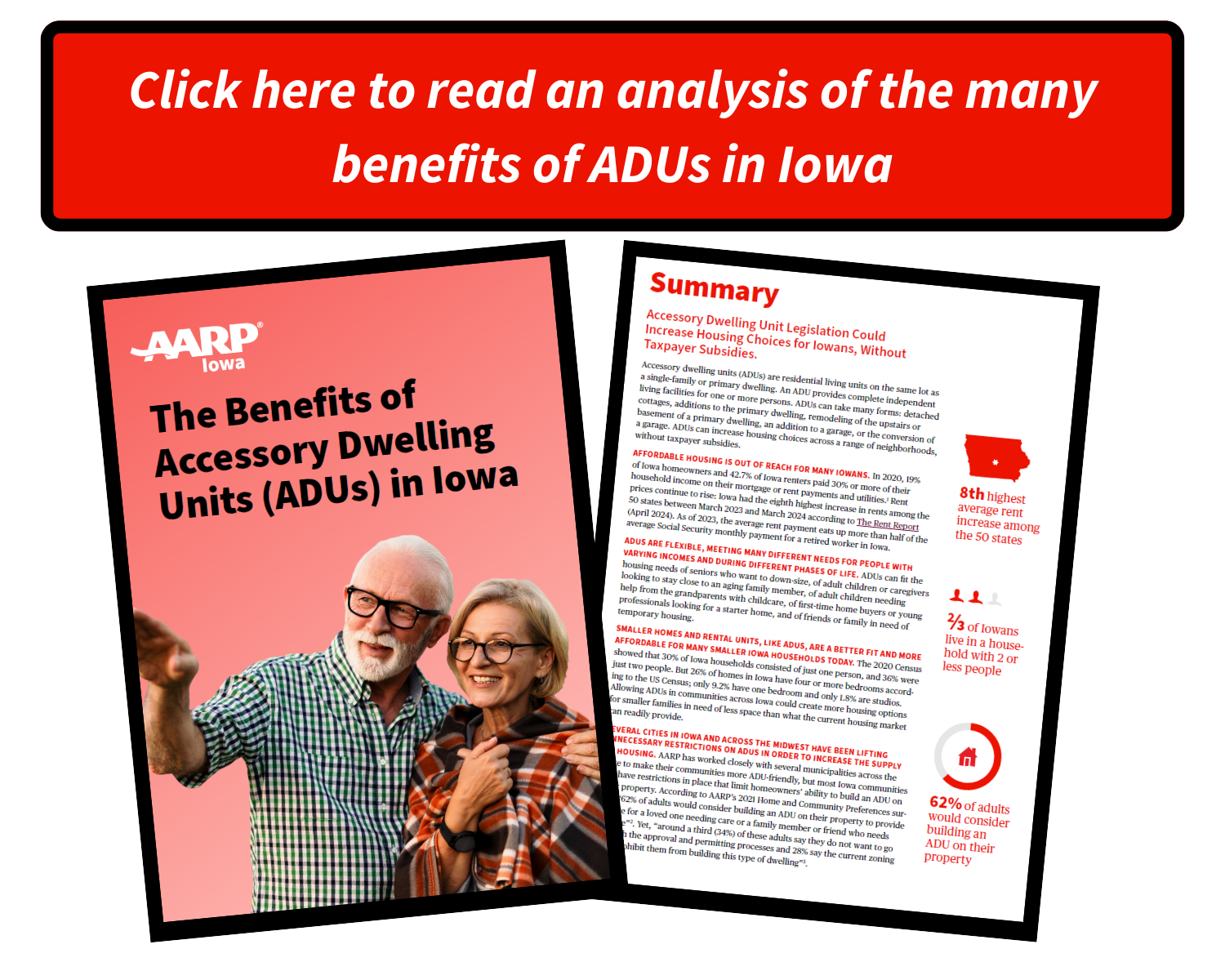AARP Hearing Center
Accessory Dwelling Units (ADUs) are residential living units on the same lot as a single-family or primary dwelling. An ADU provides complete independent living facilities for one or more persons.
ADUs can take many forms – detached cottages, additions to the primary dwelling, remodeling of the upstairs or basement of a primary dwelling, an addition to a garage, or the conversion of a garage. The various forms of ADUs have many different names such as “carriage house,” “Granny flat,” or “In-law suite.”
ADUs can help increase housing choices across a range of neighborhoods – all through private action and without taxpayer subsidies.
AARP has worked closely with several municipalities across the state to make their communities ADU-friendly, but most Iowa communities still have restrictions that limit homeowners’ ability to build an ADU on their property. During the 2025 legislative session, AARP advocated for a statewide ADU bill that requires all cities and counties in Iowa to allow homeowners to build an ADU on their property. The bill, SF 592, passed in both chambers with broad bipartisan support and was signed into law by Governor Reynolds on May 1, 2025.
The Many Benefits of ADUs
ADUs are flexible & adaptable – and can benefit Iowans in multiple ways. Across the U.S., ADUs are taking off as a popular new/old housing type. Some reasons for this emerging trend include:
- Income stream and property value. ADUs can generate cash flow as short-term rentals and may increase the resale value of the property.
- Match housing needs at any age. ADUs can offer empty nesters and seniors the chance to “age in place” in the community they know and love, multi-generational families a way to live close by but not share a kitchen, and individuals and couples an entry-level housing choice.
- Affordable housing. ADUs help keep housing costs down for both owners and renters. They can generate rental income to help homeowners cover mortgage payments and may allow them to stay in their homes. Since ADUs are required to be small relative to primary dwellings, they are typically more affordable than other homes in the same neighborhood.
- Versatility. Needs change over time, and the uses of ADUs can (and often do) flex for different stages of life. Although they typically provide long-term housing, ADUs can also serve as home offices, caregiver or nanny housing, art studios, short-term rentals, and lodging for visiting friends or relatives.
Free ADU Guide:
Looking for more information on ADUs? Download our free guide!
































































